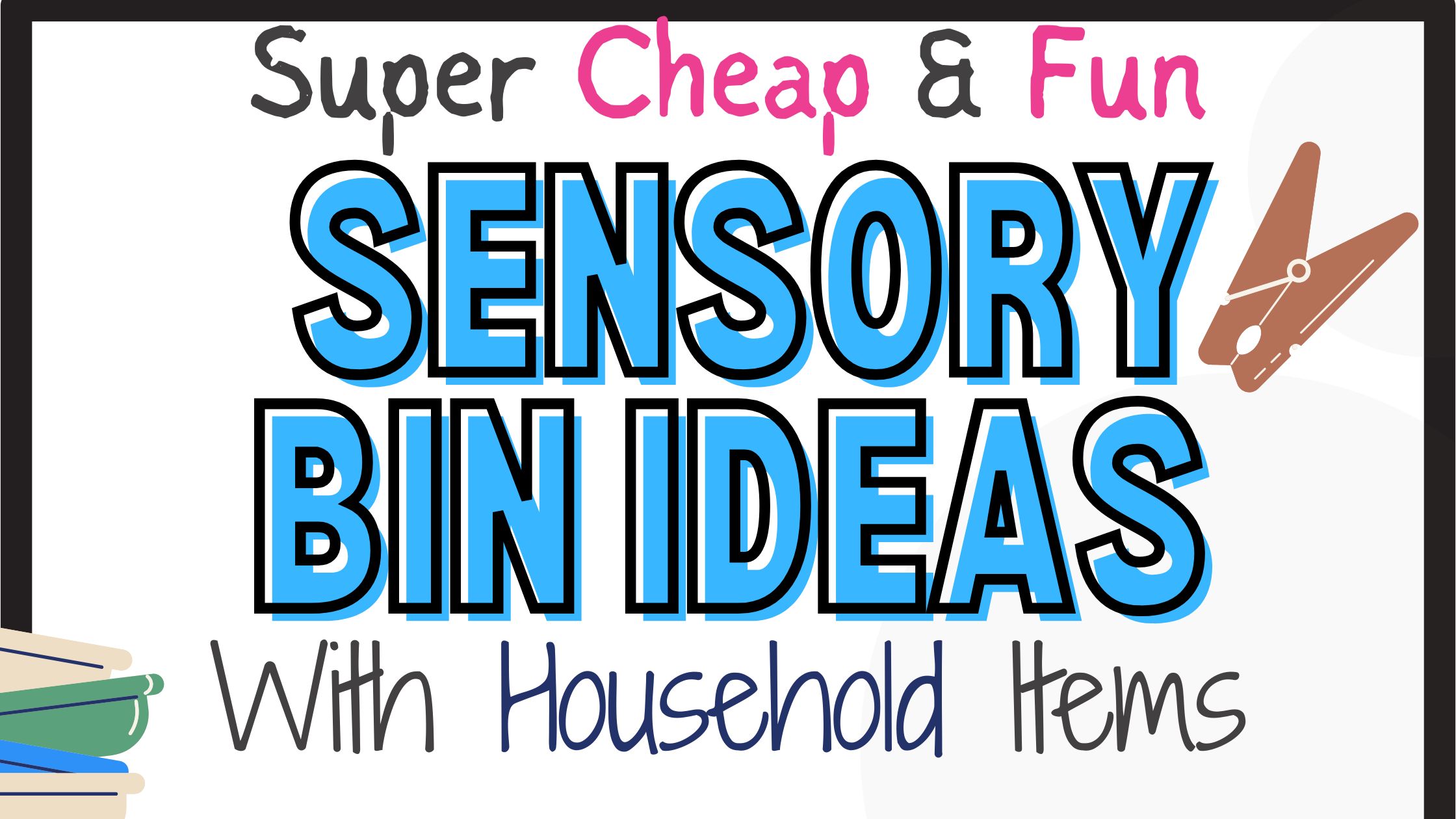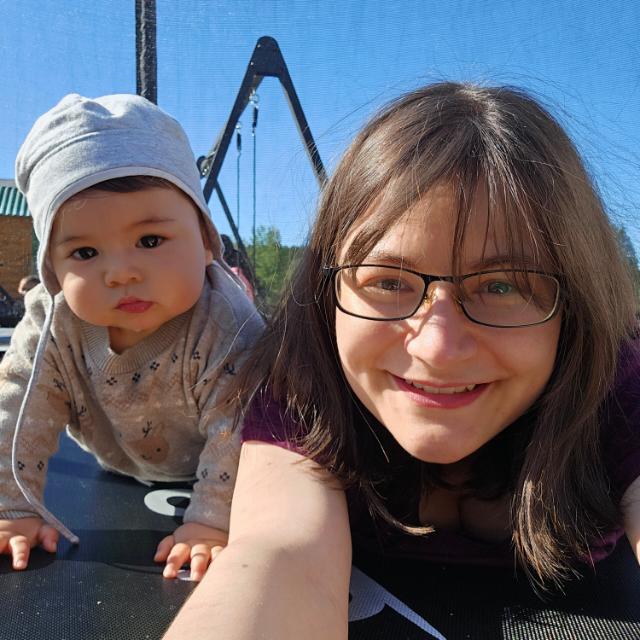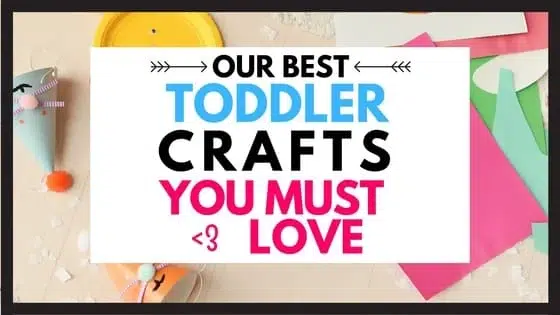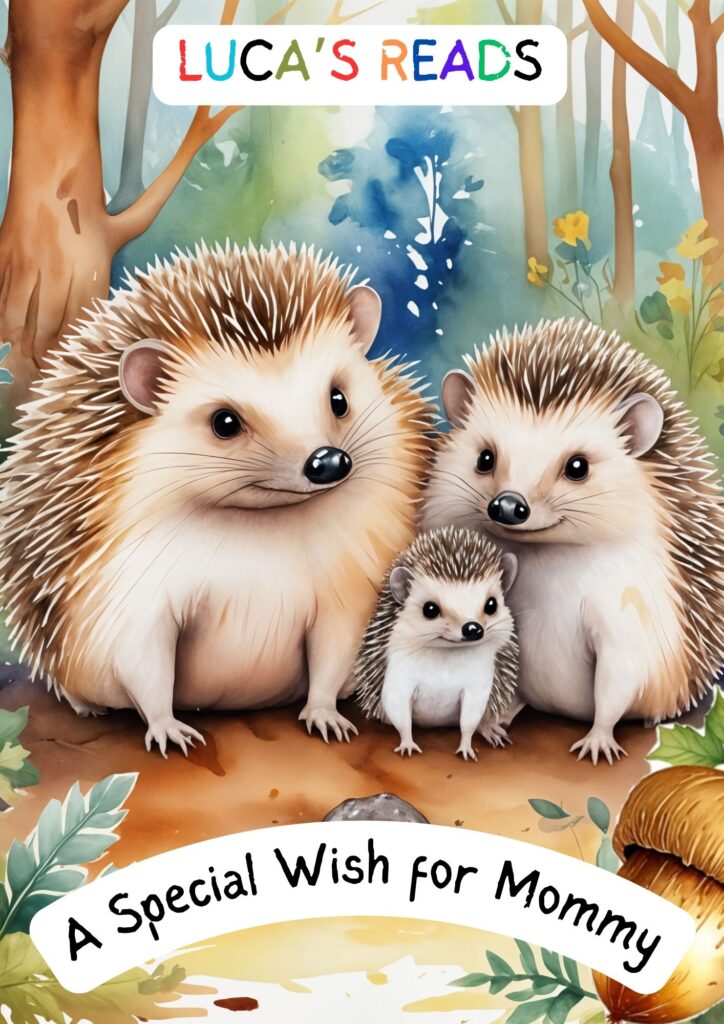Welcome back mommas to another fun-filled adventure in sensory play! Today, we’re diving into the world of sensory bins using everyday household items. (Honestly creating sensory bins can get expensive fast, especially since you are supposed to swap them out.)
Sensory bins are an incredible way to engage your child’s senses, develop fine motor skills, and provide hours of imaginative play. The best part? You don’t need to spend a lot of money to create them! Let’s explore some fantastic ideas together, including ten non-food options, that will keep your little ones entertained and learning. 🎨✨
Why Sensory Bins? 🌈
Sensory bins are fantastic for developing fine motor skills, encouraging imaginative play, and providing endless hours of fun for toddlers and preschoolers and to smuggle in a little bit of education. They offer a hands-on way to explore different textures, colors, and materials. Plus, they’re perfect for indoor play, especially on rainy days!
For more ideas on sensory play, don’t miss my posts on Sensory Play Crafts for Toddlers and Sensory Bin Ideas.

Household Items You Can Use 🏠
Before we jump into specific sensory bin ideas, let’s look at some common household items that are perfect for sensory play:
Pom-Poms: 🌈 Soft, colorful, and lightweight, pom-poms are perfect for sensory exploration.
Buttons: 🧵Assorted buttons provide different textures and colors for sensory play.
Feathers: 🪶Soft and colorful feathers create a unique sensory experience.
Pipe Cleaners: 🎨Flexible and colorful, pipe cleaners are great for bending and shaping.
Ribbon and Fabric Scraps: 🎀Different textures and colors of ribbons and fabric scraps provide tactile stimulation.
Lego Pieces: 🧱 Lego pieces of various shapes and sizes offer endless building possibilities.
Cotton Balls ☁️ Soft and fluffy, cotton balls mimic the texture of clouds.
Nature Items 🌿 Rocks, pinecones, sticks, and leaves provide natural textures and shapes.
Beads 💎 Colorful beads of various shapes and sizes offer a unique tactile experience.
Magnetic Items 🧲 A mix of magnetic and non-magnetic items creates an interactive learning experience.
Plastic Utensils and Containers: Spoons, cups, and bowls are perfect for scooping, pouring, and mixing.
Rice and Pasta: Uncooked rice and pasta are excellent base materials for sensory bins. You can even dye them with food coloring for added fun.
Beans and Lentils: These are great for adding different textures and colors to your bins.
Flour and Cornstarch: Perfect for creating a “snowy” or “sandy” texture.
Water: Simple, yet incredibly versatile. You can add food coloring, bubbles, or ice cubes to make it more interesting.
Cereal: Cheerios, Rice Krispies, or any other small cereals work wonderfully.
Non-Food Sensory Bin Ideas 🚫🍎
1. Pom-Pom Paradise 🌈
What You’ll Need: Assorted pom-poms, small containers or cups, tongs or tweezers.
Instructions: Fill a bin with colorful pom-poms. Provide small containers and tongs for sorting and transferring the pom-poms. This activity is great for fine motor skills and color recognition.
2. Lego Discovery Bin 🧱
What You’ll Need: Lego pieces.
Instructions: Fill a bin with various Lego pieces. Encourage your child to build structures, find specific pieces, or sort by color and size. For more building fun, try incorporating ideas from my Sensory Play Crafts for Toddlers post. You can create something and ask them to recreate.

3. Cotton Ball Cloud Bin ☁️
What You’ll Need: Cotton balls, small toys or figurines, scoops or spoons.
Instructions: Fill a bin with cotton balls to create a fluffy, cloud-like texture. Hide small toys or figurines within the cotton balls for your child to find and scoop out.
4. Ribbon and Fabric Scraps Bin 🎀
What You’ll Need: Various ribbons and fabric scraps, scissors (for adult use, despite that they should be safe for kids), and small containers.
Instructions: Cut ribbons and fabric scraps into different lengths. Fill a bin with these materials and encourage your child to sort, braid, or create patterns with them.
5. Bead Sensory Bin 💎
What You’ll Need: Assorted beads, small containers, and scoops or spoons.
Instructions: Fill a bin with colorful beads. Provide containers and scoops for sorting and transferring. This activity enhances fine motor skills and color recognition.
6. Nature Treasure Hunt Bin 🌿
What You’ll Need: Rocks, pinecones, sticks, leaves, and a magnifying glass.
Instructions: Fill a bin with natural materials collected from your backyard or a park. Encourage your child to explore the textures and shapes of the items. For more nature-inspired ideas, check out my Nature Sensory Bottle Ideas.
7. Pipe Cleaner Play Bin 🎨
What You’ll Need: Assorted pipe cleaners, small containers, and beads.
Instructions: Fill a bin with pipe cleaners and beads. Encourage your child to thread the beads onto the pipe cleaners, bend them into shapes, or create patterns.
8. Feather Sensory Bin 🪶
What You’ll Need: Assorted feathers, small containers, and tweezers or tongs.
Instructions: Fill a bin with colorful feathers. Provide containers and tweezers for sorting and transferring the feathers. This activity is great for fine motor skills and sensory exploration.
9. Magnet Exploration Bin 🧲
What You’ll Need: Various magnetic and non-magnetic items, a magnet wand.
Instructions: Fill a bin with a mix of magnetic and non-magnetic items. Provide a magnet wand for your child to explore which items are attracted to the magnet. This activity introduces basic science concepts.
10. Button Sorting Bin 🌈
What You’ll Need: Assorted buttons, muffin tin or ice cube tray, tongs or tweezers.
Instructions: Fill a bin with assorted buttons. Provide a muffin tin or ice cube tray and tongs or tweezers for sorting by color or size.
11. Water Play Bin 🌊
What You’ll Need: Water, Small cups and bowls, Floating toys
Instructions:
- Fill a bin with water.
- Provide small cups, bowls, and floating toys.
Water play is a timeless favorite! Kids can scoop, pour, and explore the properties of water.
Sensory Bin Ideas with Food Household Items 🌟
1. Rainbow Rice Bin 🌈
What You’ll Need:
- Uncooked rice
- Food coloring
- Ziplock bags
- Vinegar
Instructions:
- Divide the rice into several Ziplock bags.
- Add a few drops of food coloring and a teaspoon of vinegar to each bag.
- Seal the bags and shake until the rice is evenly colored.
- Spread the rice on a baking sheet to dry.
- Once dry, mix the colors together in a large bin.
Your child will love running their fingers through the colorful rice and discovering how the different colors blend together. This is a fantastic activity for developing fine motor skills and exploring colors. For more layered fun, check out my Layered Sensory Bottles post for more ideas on using colored rice!
2. Pasta Play Bin 🍝
What You’ll Need:
- Various types of uncooked pasta (e.g., penne, macaroni, fusilli)
- Plastic containers
- Spoons and scoops
Instructions:
- Fill a large bin with different types of pasta.
- Add plastic containers, spoons, and scoops.
Encourage your child to scoop, pour, and sort the pasta. They can explore the different shapes and textures, which helps with sensory development and fine motor skills. Want to add some music to your play? Check out my Sound Sensory Bottles for more ideas on making sensory experiences even more enriching.
3. Bean and Button Sensory Bin 🌱
What You’ll Need:
- Dried beans (various types)
- Colorful buttons
- Small bowls and cups
Instructions:
- Fill a bin with dried beans.
- Add colorful buttons and mix them in.
- Provide small bowls and cups for sorting.
Your child can dig through the beans to find the buttons and sort them by color or size. Ok maybe this is a bit evil. It reminds me of Cinderella. For more inspiration on sorting and color play, check out my post on Sensory Bottle Ideas.
4. Flour and Cornstarch Sensory Bin ❄️
What You’ll Need:
- Flour
- Cornstarch
- Small plastic animals or figurines
Instructions:
- Mix flour and cornstarch in a bin to create a “snowy” texture.
- Add small plastic animals or figurines.
Let your child explore the soft, powdery texture and create their own winter wonderland. This is a great sensory activity for exploring different textures and encouraging imaginative play. For more nature-inspired sensory play, take a look at my Nature Sensory Bottle Ideas.
5. Cereal Sensory Bin 🥣
What You’ll Need:
- Small cereals like Cheerios or Rice Krispies
- Plastic animals or figurines
- Cups and spoons
Instructions:
- Fill a bin with cereal.
- Add plastic animals or figurines.
- Provide cups and spoons for scooping.
This sensory bin is great for exploring textures and practicing scooping and pouring. Plus, it’s edible, so you don’t have to worry if your little one sneaks a bite! For more playful ideas, check out my Christmas Sensory Bottles for some festive inspiration.
Answering Common Questions ❓
How can I make sensory bins safe for babies? For babies under one year old, use larger items that cannot be swallowed, like large pom-poms, fabric scraps, or big plastic toys. Avoid small items that pose a choking hazard. Always supervise sensory play to ensure safety. For more ideas, check out my Sensory Bins for 1 Year Old and Younger.
What are some easy-to-clean sensory bin ideas? Dry sensory materials like rice, beans, or pasta are easier to clean up. Place a mat or tray under the sensory bin to catch spills. Consider using water-based bins outside or in a kitchen area for easier cleanup.
Bonus Tips for Sensory Bin Success 🏆
1. Use a Deep Bin: A deeper bin helps contain the materials and minimizes spills.
2. Set Up a Play Area: Designate a specific area for sensory play. Use a mat or tablecloth to protect surfaces.
3. Rotate Materials: Keep the sensory bin experience fresh by rotating the materials and themes regularly.
4. Involve Your Child: Let your child help set up the sensory bin. This increases their engagement and interest.
Pinterest Inspiration 📌
Pinterest is a treasure trove of sensory bin ideas. Here are some popular keywords to search for more inspiration:
- DIY Sensory Bins
- Cheap Sensory Bin Ideas
- Dollar Store Sensory Bins
- Sensory Bin Fillers
- Busy Toddler Sensory Play
- Insect Sensory Activities
- Bug Hunt Sensory Bin
More Sensory Play Ideas 🔗
If you’re looking for more sensory play ideas, check out these posts:
- Layered Sensory Bottles: Stunning sensory bottles that captivate with layers of colors and textures.
- Sound Sensory Bottles: Explore the world of sound with these DIY sensory bottles.
- Nature Sensory Bottle Ideas: Bring the beauty of nature into your sensory play.
- Sensory Play Crafts for Toddlers: More fun and crafty sensory play ideas for toddlers.
- Sensory Bins for 1 Year Old and Younger: Safe and engaging sensory bin ideas for the littlest ones.
- Crafting Magic: Where to Find the Best Sensory Bottle Materials Online and Offline: A guide to finding the best materials for your sensory projects.
- Sensory Bottle Games: Fun and educational games using sensory bottles.
Final Thoughts 🌟
Creating sensory bins with household items is a fantastic way to provide your child with engaging, educational play experiences without breaking the bank. From rice and pasta to buttons and beans, the possibilities are endless. These simple, budget-friendly ideas are perfect for keeping little hands busy and minds active. Remember to rotate the themes and materials to keep things fresh and exciting.
Pin it for Later

What household items have you used to create sensory bins? I’d love to hear your creative ideas and experiences in the comments below! If you found these tips helpful, please share this post with your friends and family. Don’t forget to pin this post on Pinterest for easy reference and future inspiration. Happy sensory playing! 🎉📌








